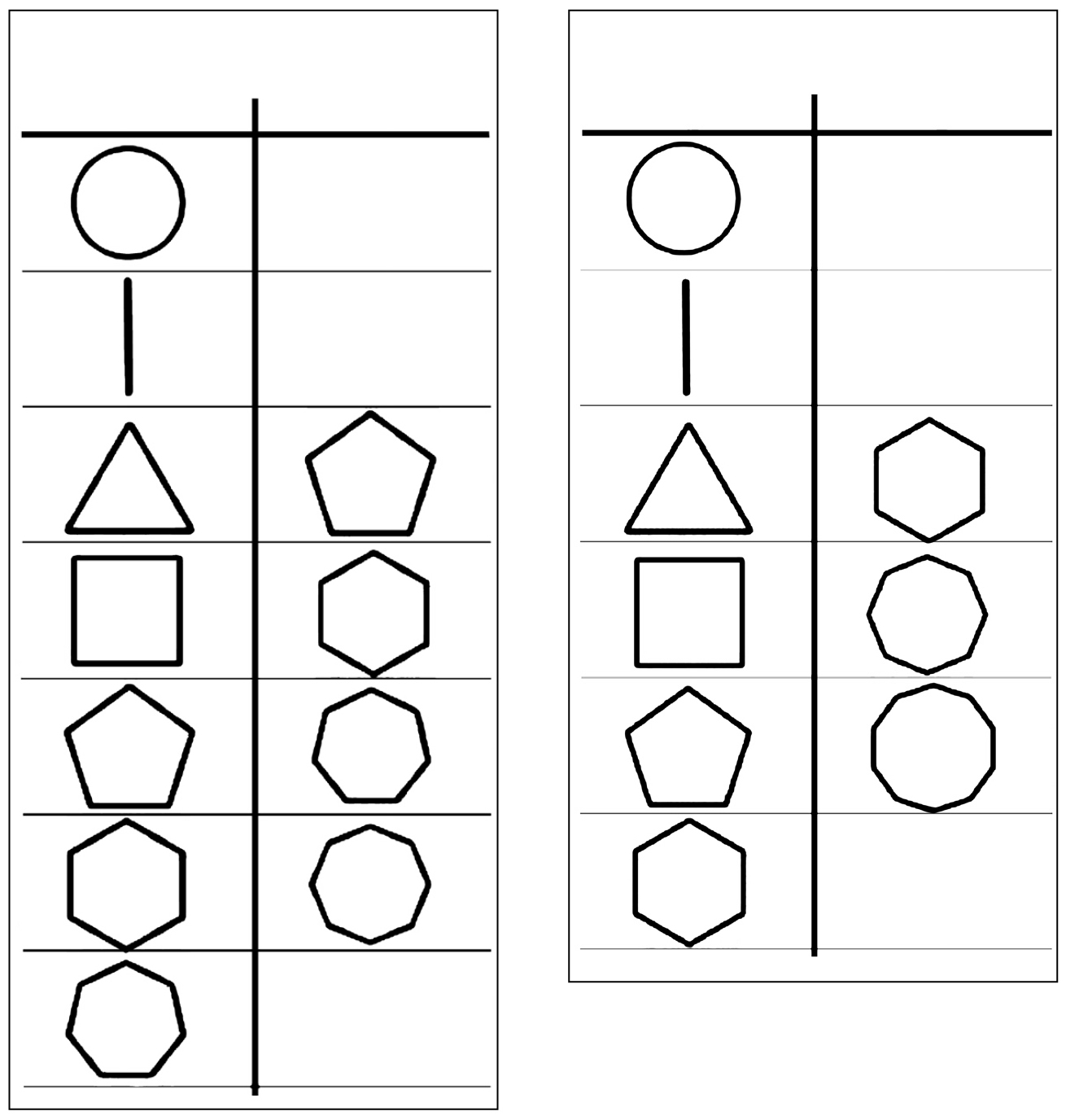By Glenn Waddell Jr., posted March 27, 2017 —
The mathematics majors in my teaching
program are all competent in algebra, calculus, and beyond, but when I start
mixing their math knowledge up, they run into walls. Topics at the elementary school
level allow preservice teachers the fun of teaching things like T tables and
function machines. But challenging them to think about why T tables are so
useful to beginning learners is an interesting task. For example, the T-table below
looks simple, right?
.jpg)
Take
the input shape, add two sides. But what happens when the two inputs—a circle
and a vertical line segment—are included at the top of the table? The output
for the line may be easy; that is the triangle. But what happens with the
circle? Is it even a valid question to insert the circle or line into the input
table? Why?
The table on the left (below) gets to
the heart of asking good questions that require a strong understanding of
definitions.
 For
the image pairs on the right, a rule gives the output shape by doubling the
number of sides in the input shape. But what happens when the circle and line
are included?
For
the image pairs on the right, a rule gives the output shape by doubling the
number of sides in the input shape. But what happens when the circle and line
are included?
College students find themselves
stumped by a fourth-grade introductory function problem. They realize that they
have been doing math but not often thinking about what the math means, and—more
important—what the definitions they have been using actually mean. This
cognitive dissonance creates questions that are interesting for them and their future
learners. Questions such as these arise:
• Is the circle a shape with no sides? Or
infinite sides?
• Does the line have any sides at all?
• So, is it zero, or is it none?
• And what is the difference between zero and
no sides for multiplication?
• What would a two-sided shape look like?
• If multiplication is just repeated
addition, why do the two tables have different holes on the output?
Additional
questions of domain and co-domain arise:
• Can the circle or line be included in the
domain?
• Are they the same type of objects as the
rest of the shapes? Why? Why not?
• In the second table, the co-domain is tied
to even numbers; but in the first, it is not?
Around this time, the preservice
teachers realize that I never used the word polygon,
which has a specific definition. I kept saying shape, which allowed them to create their own definitions. This
conversation that began in terms of teaching an elementary school class must
turn to address how to use these insights to develop students’ mathematical
thinking. What definitions will the learners attach to the shapes if the teacher
does not tell them what to think? What outcomes will the learners derive when
they are allowed to define the shapes for themselves? How will the class
reconcile the different definitions if different definitions are created? How
will the teacher ask questions to prompt deeper thinking if the learners are
staying at the surface level? And finally, how are the Common Core’s Standards
for Mathematical Practice (SMP) used here? Will learners be “reasoning
abstractly and quantitatively” (SMP 2)? Will the teacher allow for students to
“construct viable arguments and critique the reasoning of others” (SMP 3)? The
joy of mathematics can be found when the simple problems we take for granted
are tweaked to encourage deeper and creative thinking.
REFERENCE
Common Core State Standards Initiative (CCSSI). 2010.
Common Core State Standards for Mathematics (CCSSM). Washington, DC: National
Governors Association Center for Best Practices and the Council of Chief State
School Officers. http://www.corestandards.org/wp-content/uploads/Math_Standards.pdf

Glenn
Waddell Jr. is a Master Teacher for NevadaTeach, a UTeach replication program
at the University of Nevada–Reno. He is also currently a doctoral student at
UNR, looking forward to comps and dissertation proposals in the next year. He
previously taught algebra 1, 2, and 3 for nine years in Washoe County School
District and has been an active participant in the MTBoS since 2011. He blogs at http://blog.mrwaddell.net and tweets at @gwaddellnvhs.